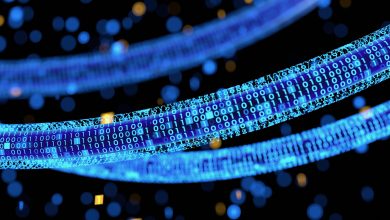
Data science is a field that thrives on curiosity and the relentless pursuit of knowledge. But what truly drives success in this domain? One secret tool that data scientists often leverage is the art of asking probing questions. These questions are not just about gathering data but about digging deeper to uncover insights that are not immediately apparent. In this article, we’ll explore how probing questions can be your secret weapon for achieving success in data science.
What Are Probing Questions?
Probing questions are a specific type of inquiry designed to elicit deeper, more detailed responses. Unlike closed-ended questions that can be answered with a simple “yes” or “no,” probing questions encourage the respondent to think critically and provide more nuanced answers. To understand what is a probing question, consider that they can be categorized into several types, such as clarifying questions, reflective questions, and analytical questions.
Why Probing Questions Matter in Data Science
In data science, the value of probing questions cannot be overstated. They play a crucial role in enhancing our understanding of data, ensuring its quality, and driving insightful analysis.
Enhancing Data Understanding
Probing questions help data scientists dig deeper into the data, revealing underlying patterns and relationships that might not be obvious at first glance. By continuously questioning the data, scientists can uncover hidden trends and insights that can significantly impact the outcome of their projects.
Identifying Data Quality Issues
One of the biggest challenges in data science is ensuring data quality. Probing questions can help identify anomalies, inconsistencies, and biases in the data, allowing data scientists to address these issues early in the analysis process.
How to Formulate Effective Probing Questions
Formulating effective probing questions requires a deep understanding of the data context and a strategic approach to questioning.
Understanding the Data Context
Before you can ask effective probing questions, you need to understand the context of the data you’re working with. This means knowing the source of the data, the variables involved, and the potential biases that might be present.
Asking Open-Ended Questions
Effective probing questions are typically open-ended, encouraging detailed responses. Instead of asking, “Is this data accurate?” you might ask, “What steps were taken to ensure the accuracy of this data?”
Examples of Probing Questions in Data Science
Probing questions can be used at various stages of a data science project, from data collection to analysis, and platforms like AssignmentCore offer expert guidance for data science assignment help..
During Data Collection
- What criteria were used to select the data sources?
- How was the data collected and what methodologies were employed?
During Data Cleaning
- What patterns of missing data are present, and what might they indicate?
- Are there any outliers, and what could be the reasons behind them?
During Data Analysis
- What assumptions are we making with our analysis, and are they valid?
- How do the results change with different parameters or models?
Probing Questions for Specific Data Science Tasks
Different stages of a data science project require different types of probing questions.
Exploratory Data Analysis (EDA)
- What initial patterns or trends can be observed in the data?
- How do different variables interact with each other?
Feature Engineering
- What new features could be created to improve model performance?
- Are there redundant features that should be removed?
Model Building
- What is the rationale behind selecting this particular model?
- How does the model performance vary across different subsets of the data?
Common Challenges and How to Overcome Them
Despite their usefulness, probing questions can sometimes lead to challenges.
Misinterpretation of Data
Probing questions can sometimes lead to misinterpretations if the context is not fully understood. Ensuring a comprehensive understanding of the data before diving into questioning is crucial.
Biased Questions
Questions that are biased can lead to skewed data interpretations. It’s important to formulate questions that are neutral and objective to avoid this pitfall.
The Role of Probing Questions in Team Collaboration
Probing questions are not just useful for individual data scientists; they can also enhance team collaboration.
Facilitating Communication
By asking probing questions, team members can ensure that everyone has a clear and thorough understanding of the data and the project objectives. This can help in aligning the team’s efforts and improving overall efficiency.
Encouraging Critical Thinking
Probing questions can stimulate critical thinking and innovation within the team. By challenging assumptions and exploring new possibilities, teams can develop more robust and creative solutions.
Tools and Techniques to Enhance Probing in Data Science
Several tools and methodologies can aid in the effective use of probing questions.
Software Tools
Tools like Jupyter Notebook, RStudio, and Tableau provide interactive environments where data scientists can continuously ask and answer probing questions.
Frameworks and Methodologies
Frameworks like CRISP-DM (Cross-Industry Standard Process for Data Mining) encourage iterative questioning and refinement, which is essential for thorough data analysis.
The Future of Probing Questions in Data Science
As data science continues to evolve, the role of probing questions will only become more significant. Emerging trends such as explainable AI and automated data analysis will likely incorporate advanced probing techniques to ensure transparency and accuracy.
Conclusion
Probing questions are an indispensable tool in the data scientist’s toolkit. They enable deeper insights, ensure data quality, and drive more meaningful analysis. By mastering the art of asking probing questions, you can significantly enhance the effectiveness of your data science projects.
FAQs
What are the key benefits of using probing questions in data science?
Probing questions help in uncovering deeper insights, identifying data quality issues, and facilitating more effective team collaboration.
How can beginners start using probing questions effectively?
Beginners should start by understanding the context of their data, asking open-ended questions, and continuously refining their questioning techniques.
Are there any risks associated with probing questions?
Yes, risks include misinterpretation of data and biased questioning. These can be mitigated by ensuring a thorough understanding of the data and formulating neutral questions.
How often should probing questions be reviewed and updated?
Probing questions should be reviewed and updated regularly, especially as new data or insights become available.
Can probing questions be automated?
While some aspects of probing can be automated, the nuanced and context-specific nature of effective probing questions often requires human insight.





